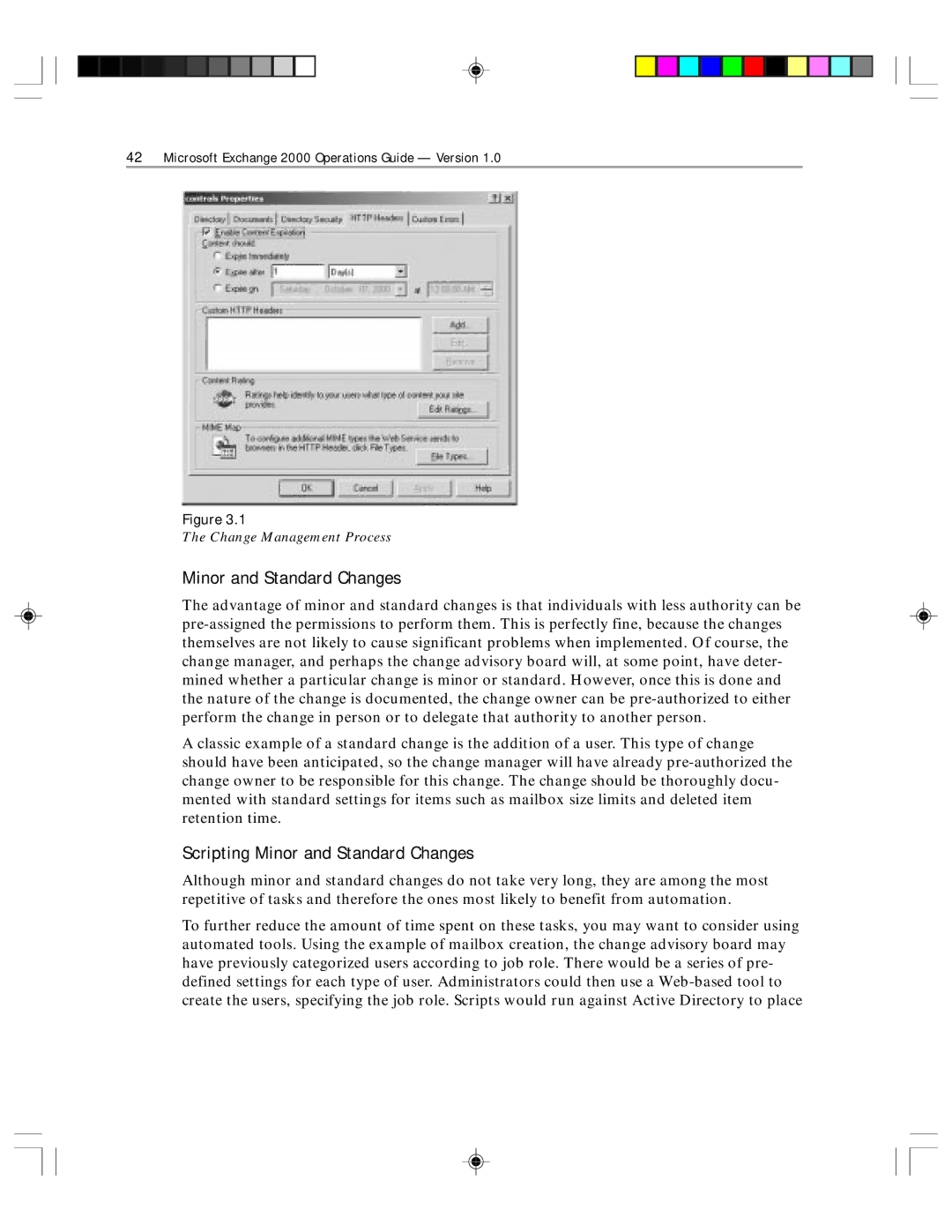
42Microsoft Exchange 2000 Operations Guide — Version 1.0
Figure 3.1
The Change Management Process
Minor and Standard Changes
The advantage of minor and standard changes is that individuals with less authority can be
A classic example of a standard change is the addition of a user. This type of change should have been anticipated, so the change manager will have already
Scripting Minor and Standard Changes
Although minor and standard changes do not take very long, they are among the most repetitive of tasks and therefore the ones most likely to benefit from automation.
To further reduce the amount of time spent on these tasks, you may want to consider using automated tools. Using the example of mailbox creation, the change advisory board may have previously categorized users according to job role. There would be a series of pre- defined settings for each type of user. Administrators could then use a
